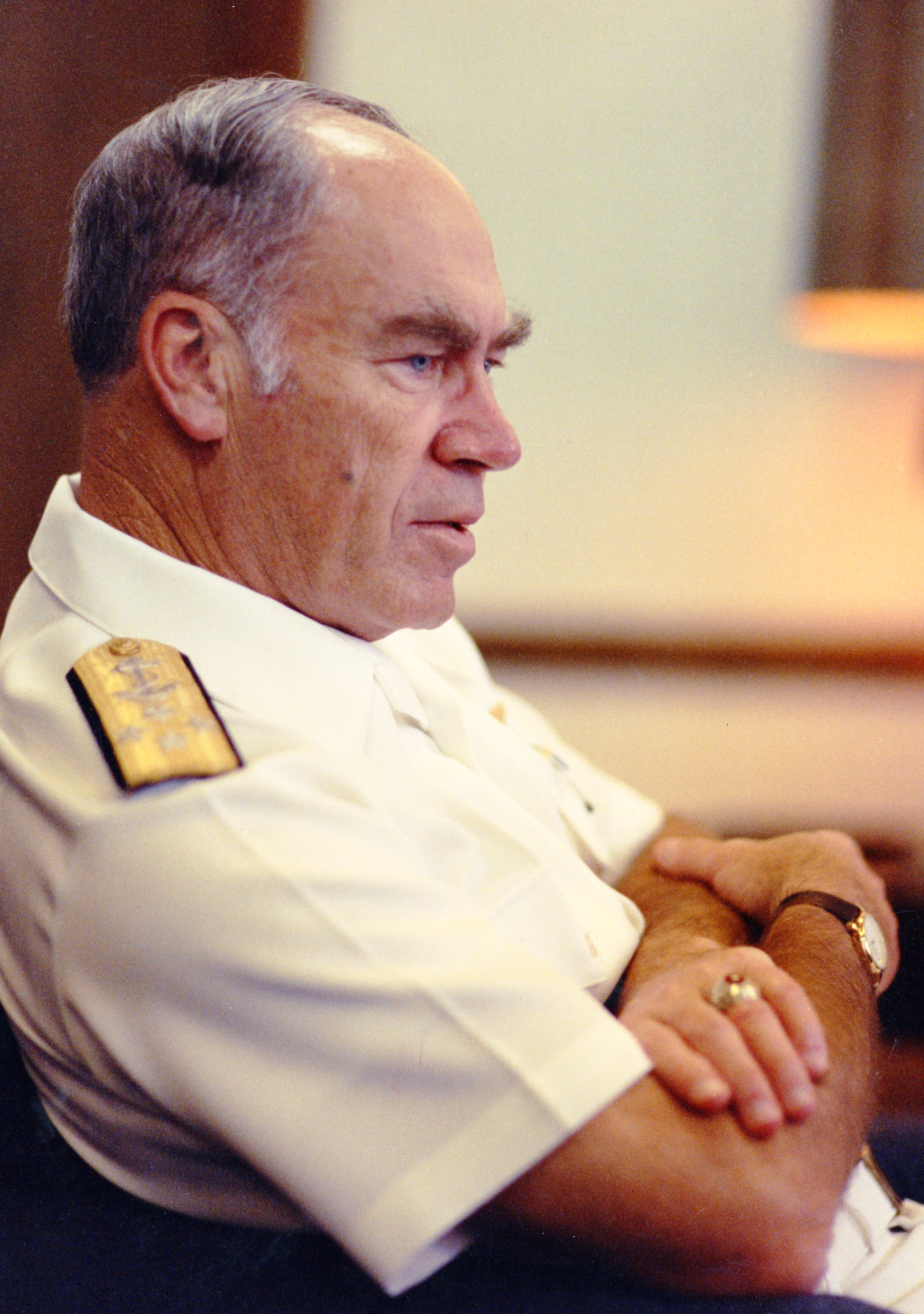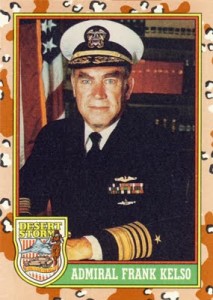
On Sunday former Chief of Naval Operations, Adm. Frank Kelso, died in his home state in Tennessee, “following a fall this week that resulted in a severe head injury,” according to a report from al.com.
The following is an excerpt of 2009’s preface to Kelso’s U.S. Naval Institute oral history.
The early 1990s were a time of substantial-even tumultuous-change in the United States Navy. Adm. Frank Kelso presided over the service during that era as the Chief of Naval Operations and faced a host of daunting challenges.
On the global level, the Cold War had just come to an end, with the United States and its allies as the winners. U.S. citizens, through Congress, sought a “peace dividend” in the form of substantial cuts in defense expenditures once the Soviet Union was vanquished.

Adm. Kelso sought to plan for the changes in an orderly way, and that meant deep, deep cuts, even as he was daily supporting the Navy’s combat role in the Persian Gulf War of 1991.
On Adm. Kelso’s watch the Navy made large reductions in numbers of personnel, ships, and aircraft. The hierarchy of the Navy also sought during this period to fashion a new strategy to deal with a host of possibilities different from the Soviet threat that had dominated U.S. defense policy for much of the previous half century.
The result was” … From the Sea.”
Within the service itself was a continuing need to accommodate to the Goldwater Nichols Act of 1986, which mandated far more jointness in the U.S. armed forces than had been the case previously.
The power of the Joint Chiefs of Staff was diminished, and, as Adm. Kelso [said], the Chief of Naval Operations was no longer an operator. He became a resource provider to the joint commanders in chief who were in the operational chain of command.
But the CNO continued to be a policymaker. To match up with the new emphasis on jointness, Kelso reorganized the OPNAV (Office of the Chief of Naval Operations) staff and created a Naval Doctrine Command that he intended to operate in concert with Army and Air Force counterparts. He also instituted Total Quality Leadership as a way of bringing the management tools of Dr. Edwards Deming to the service. There were also substantial changes in the Navy culture-most notably the decision by Congress to allow women to serve in combat roles.
For the Navy of the early 1990s that meant women began to be assigned to warships and to tactical aircraft, a step beyond even the changes of the late 1980s, when women began serving in substantial numbers in the Navy’s logistic support ships.
And the culture of naval aviation had to change, brought shockingly to the public’s attention by the misbehavior of naval aviators at the 1991 Tailhook convention in Las Vegas. Investigations demonstrated that aviators had molested and otherwise mistreated a number of women during the convention, thus tarnishing the reputation of naval aviation in particular and the Navy as a whole.
Addressing the continuing turmoil in the wake of Tailhook demanded a great deal of Adm. Kelso’s time and, as he put it, made him a “lightning rod” for heat directed at his service…
Before Adm. Kelso was CNO, a successful submarine patrol to the North Pole led to an unexpected visit in 1975 with Adm. Ike Kidd, which led to Kelso becoming Kidd’s executive assistant. In that role Kelso’s horizons were broadened considerably beyond his previous background, which had been mostly in submarines and Adm. Hyman Rickover’s nuclear power program.
A tour in the early 1980s in the office of Secretary of the Navy John Lehman led to Kelso’s command of the Sixth Fleet, a billet that had been the preserve up till then mostly of aviators. As the fleet commander, Kelso presided over successful strikes that defanged Libya as a sponsor of international terrorism.
The foundation of Adm. Kelso’s life came from his growing-up years in the town of Fayetteville, Tennessee, which he recalls with warmth and nostalgia. He was shaped by a multi-generational family life with his parents and grandparents. He tells also of his happy marriage with his wife Landess, the pride they feel in their children’s accomplishments.
More information on Adm Kelso’s oral history can be found here.




